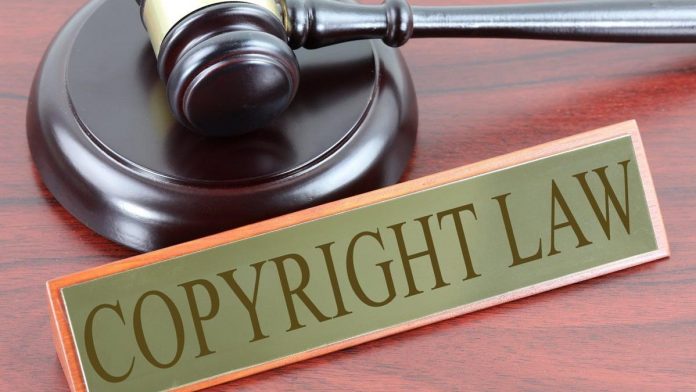This article has been edited by Nishka Kamath, a graduate of Nalanda Law College, University of Mumbai. It gives a brief overview of the types of tattoos and whether they can or cannot be copyrighted. An attempt has been made to shed light on who will be the owner of the copyrighted tattoos, if they are copyrightable.
It has been published by Rachit Garg.
Table of Contents
Introduction
India has an ancient history of tattooing which traces back over 5000 years. Tattoos existed in India since time immemorial, but how old this custom exactly is, remains an unsolved mystery to date.
The tradition of tattooing has been deeply rooted in India for ages. From the Santhals (men of this tribe get themselves tattooed with the coin-sized motifs they address as “Sikka”) to the Toda tribe (who inscribe a long-lasting tattoo famously known as “Pachakutharathu”) of South India, Tamil Nadu to be precise; to the Rabaris tribe (who are famous for debossing a traditional tattoo known as “Trajva”) from Gujarat, the tattoo culture has emanated from our very nation. With the arrival of pop culture, all these Indian markings got artistically shaped into western tattoos. With the advent of this, began the revolution of tattoos, which is why legislation was required to safeguard the originality and creativity of the tattoos and their artists and thus came the Copyright Act, 1957.
Now imagine, you have just got out of a tattoo parlour all gleeful about your new tattoo, suppose you got a trending lotus flower tattoo as below:
Trending lotus flower tattoo ideas
The Lotus flower is also known as the Padma and can be used as an art in designing tattoos. The flower is a sacred symbol in some religions, such as Hinduism. It is a symbol for expanding the soul based on its petals. Lotus flower tattoo have become a trend in modern society.
If you are planning to get lotus flowers inked on your body, there are so many designs you can choose from. You can try the following designs of lotus flower tattoo ideas this year.
Blend of outlined lotus and line work
This is a nice choice if you want a simple lotus tattoo. It is a simple artwork that can be done on your wrist and combined with a bit of dot work at the top part of the lotus.
Lotus flowers can blend well with any extra artwork of your choice to bring up your dream tattoo.
The Om symbol
The Om symbols are used to signify the essence of the eventual reality. Using this symbol on top of a lotus flower makes your tattoo look more sacred.
The tattoo is best inked in black, and other than the symbolic meanings; the tattoo is very attractive in nature.
The colored lotus flower
There is nothing as attractive as getting a multi-colored lotus flower tattoo. This tattoo idea is also spiritual and signifies the universe.
The tattoo is quite complex and requires some level of hard work. For the best final results, you need to get this tattoo idea done by an experienced professional to avoid mistakes.
3D effect
Lately, using the 3D effect on tattoo ideas is becoming increasingly popular. This effect can also be applied to a lotus flower tattoo. It requires some patience and hard work but eventually, it is worth every effort.
The design makes the tattoo look bold and massive. It is a great option if you are looking for a huge and bold tattoo idea to ink on your shoulder or any other body part of your choice.
Full black tattoo
As the name suggests, the tattoo is created by inking a lotus flower artwork on any body part using black ink. It is a great idea if you are a black color lover.
An extended lotus tattoo
It is a tattoo idea that is created by inking a lotus flower as the major part of the tattoo and adding an extension of artwork of your choice. You can simply add art to the flower by adding some petal extensions.
Tiny lotus tattoo
If you are not into bold and large tattoos, you can get a tiny lotus flower tattoo. The tattoo featured is tiny in size and yet outstanding. It can be inked on any body part of your choice, and you can also use the ink color of your choice.
A chandelier-shaped lotus tattoo
It is a tattoo idea that features a lotus flower and some extensions to make up a chandelier-inspired shape. It is more appealing if different ink colors are used. The back is a great body part to accommodate the chandelier design perfectly.
Watercolor design
Using watercolor on tattoo ideas brings an appealing final look no matter the artwork used. This case also applies to lotus flower tattoos. You can combine the lotus flower with Latin words artwork to pass the message of your choice. This design can be done on any body part.
Defined tattoo
You can have a lotus flower well designed to feature even the slightest physical components of the flower in one tattoo. The tattoo is bigger to accommodate all the features and looks stunning inked on the stomach. However, you can always have it in any other body part you like:
Full lotus petals
The design outlines complete petals just like in the real flower. The design is huge and looks great inked on a woman’s front thigh.
Wide outlined lotus flower
It features a thick outline of the lotus flower tattoo. It automatically becomes huge as a result of the thick outline.
And you are all set to flaunt it to the whole world! But do you actually have ownership over that piece of art? Let’s find out!
Can tattoos be copyrighted
As stated above, with the evolution of tattoos and the focus on the intricacies, delicate artistic details and hard work put forth by the tattoo artists, there arose a dire need of safeguarding their artistic works, which is why the Copyright Act, 1957, came into being, amongst other needs.
As per Section 2(c) of the Copyright Act, 1957, artistic work means-
“(i) a painting, a sculpture, a drawing (including a diagram, map, chart or plan), an engraving or a photograph, whether or not any such work possesses artistic quality;
(ii) a work of architecture; and”
(iii) any other work of artistic craftsmanship.”
Thus, from the above definition, it can be deduced that the artistic work includes engraving, inscribing, sculpting, painting, or even a photograph for that matter. Now, the tattoos inscribed onto any individual’s skin are considered a “fixed tangible medium” and thus, they satisfy the criterion stated in the Act for falling in the category of artistic work. Accordingly, there is Section 13(1) in the Copyright Act, which states that artistic creations in India can be copyrighted. Thus, any tattoo design that shows enough inventiveness and is printed on physical media can be copyrighted.
Now that we know that tattoos can be copyrighted, a question may arise as to upon whom the ownership rights will be vested and who will be the sole owner of such an art. Let us see!
Who will be the owner of copyrighted tattoos
As per Section 17 of the Copyright Act, copyright ownership belongs to the creator of the art. Therefore, the tattoo artist will be the owner, in most cases. Yes, you read it right! The tattoo artist who designed the tattoo will be the owner even if the art is made on your body.
Famous case law on the ownership of a tattoo
S. Victor Whitmill vs. Warner Bros. Entertainment Inc. (2011)
If you have watched the movie “Hangover: Part 2,” you must have noticed that the tattoo where Ed Helms’s character wakes up with a tribal tattoo one morning, is quite identical to that of Mike Tyson’s tattoo, which is created by the tattoo artist S. Victor Whitmill.
In this case, the tattoo artist S. Victor Whitmill, who had obtained copyright protection for Tyson’s tattoo around 8 years ago with the United States Patent and Trademark Office, filed a copyright infringement suit against Warner Bros for using his art without prior consent.
The lawyer presenting Warner Bros contended that the use of the tattoo was valid under the “fair use doctrine,” but Judge Perry, who was hearing this case, described it as “silly”. Further, the Court stated that the tattoo was entirely in its original form and was an exact replica of the tattoo. Whitmill then requested an injunction while the movie was released, which was denied by the judge. Even so, the matter did not reach the doors of the court or the trial, as both parties agreed to settle the dispute for an undisclosed amount.
Who owns the copyright for a tattoo: the tattoo artist or the tattoo bearer
As discussed above, the tattoo artist owns the rights to the design. However, the person upon whom the tattoo is drawn, also known as the tattoo bearer, has several options for acquiring ownership of the tattoo. The options for obtaining ownership of a tattoo are discussed below.
Rights and remedies of a tattoo bearer
Tattoo artist independent contractor agreement
A tattoo artist independent contractor agreement is an agreement between a tattoo artist and their client in which the tattoo artist consents to work for the client as an independent contractor. These agreements discuss the services to be provided, the financial obligations of the parties, and most remarkably, who will hold the intellectual property linked to the artistic work.
Further, there is an ownership clause in this type of agreement, which implies who has possession over the “work product” including notes, drawings, models, moral rights, copyrights, and other items. Generally, the client for whom all the work was done throughout the contract time acquires all rights, titles, and interests.
Assignment under Section 18 of the Act
In matters where the contract for owning the copyright of the tattoo has not yet been signed, an assignment under Section 18 of the Copyright Act can be made and signed by both parties.
A point must be noted that the assignment is only legitimate if it’s signed by the assignor or a duly authorised agent.
Relinquishment (waiver) of Copyright
Under Section 21 of the Copyright Act, rights can be relinquished. The copyright of the tattoo artists’ work can be easily surrendered by filing a notice with the Registrar of Copyrights in the prescribed format.
Granting a licence
Under Section 30 of the Copyright Act, a tattoo artist who has ownership of an existing tattoo or any tattoo that he/she may design in the foreseeable future can grant any interest in the right through a licence signed by him/her or his/her legally authorised representative.
Notable case laws on infringement of tattoo copyright
Solid Oak Sketches, LLC vs. 2K Games, Inc. (2016)
In this notable case, the video game developers and the defendants- 2K Games, Inc. and Take Two Entertainment, released their annual update- NBA 2K basketball simulation, that illustrated NBA basketball players, including their tattoos. This game became fairly popular. Take Two Entertainment paid a hefty amount of $1.1 billion to get the rights to use NBA players’ names from the NBA. Solid Oak sued Take Two for infringement of their copyright for exhibiting their artistic work in the video game and inflicted an obligation on NBA players and Take Two to get prior approval from Solid Oak by paying licence fees.
The defendants put forth several arguments, including one seeking a proclamation that their usage of the tattoos was just under the fair use doctrine. The defendants moved for summary judgement after the Court declined a motion for judgement on the pleadings.
The Court then pronounced judgement on three grounds, which are as follows:
- De minimis use
The tattoos appeared on only 3 players out of 400; hence, the usage of tattoos by Take Two was de minimis. Further, due to the fast pace of the players in the game, the tattoos were difficult to recognise.
- Implied licence
Further, the Court observed that the NBA players had the indirect licence to use their tattoos as they would be attending public gatherings, and thus, the players as well as Take Two were allowed to use players’ tattoos via direct as well as indirect licences.
- Fair use
Moreover, the Court also made the observation that all the conditions of fair use were fulfilled by Take Two and that the nature of use was not just a sheer depiction of artistic work on the skin, but a transformative use.
Looking at all the above factors, the Court reached a decision that the defendants used the tattoos under the doctrine of fair use and granted judgement in the favour of the defendants.
Reed vs. Nike (2019)
In this well-landmark case, a tattoo artist, named Mr. Reed, contended that he was the owner of the tattoo on the arm of Mr. Wallace. He further claimed that he was entitled to the rights, title, and interest of the original artwork. To obtain relief, Reed made the following three claims:
- The first contention was that Mr. Wallace infringed his artwork by duplicating, replicating, distributing, and publicly using the tattoo without obtaining prior permission from Nike and Weiden.
- Further, Reed argued that there was a contributory infringement against Wallace for making Weiden and Nike believe that Wallace had exclusive ownership rights of the copyright of the Wallace tattoo.
- Moreover, Reed stated that he was qualified for obtaining a percentage of profits obtained by Wallace for the use of his tattoo in the Nike advertisement.
This argument was never settled in a court of law, hence becoming an out-of-the-court amicable settlement.
Conclusion
Under Section 2(c) of the Copyright Act, tattoos come under the purview of artistic works, and can be copyrighted under Section 17 of the Copyright Act. The tattoo artist, and not the individual upon whom the tattoo is drawn, also known as the tattoo-bearer holds the copyright to the tattoo. However, the tattoo bearer can obtain ownership in one of the manners stated above, provided there was no prior legal agreement with the tattoo artist about the ownership of the copyright.
Students of Lawsikho courses regularly produce writing assignments and work on practical exercises as a part of their coursework and develop themselves in real-life practical skill.LawSikho has created a telegram group for exchanging legal knowledge, referrals and various opportunities. You can click on this link and join:
https://t.me/joinchat/J_0YrBa4IBSHdpuTfQO_sA
Follow us on Instagram and subscribe to our YouTube channel for more amazing legal content.












